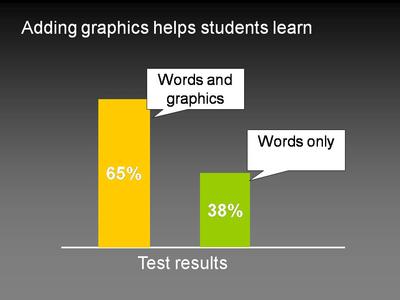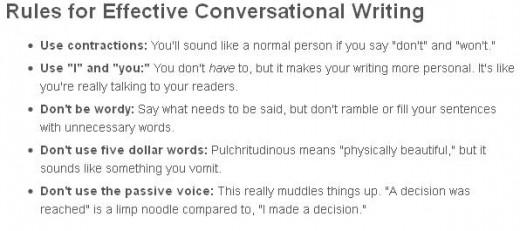Instructive Principles that Manage Cognitive Load

Instructive or Destructive Principles
Eric J. Specht
November 18, 2012
The cognitive theories of learning base instructive principles according to how the brain processes information, or in other words, how people actually learn. According to the cognitive theory and research evidence, people have a visual/pictorial processing channel and an auditory/verbal processing channel to process information; however, the processing domains are vulnerable to instructions that contain flawed principles. As an online instructional designer or an e-learner, it is important to able to evaluate online learning designs to determine the learning quality the design promotes. To help determine the quality of design; it is essential to know and understand the modality, redundancy, coherence, and the personalization principles of instructional design. Identifying the four principles of design enables the designer, student, or both to evaluate online designs successfully.

Modality principle
The Modality principle in instructional design refers to using audio narration rather than on-screen texts. Often, online lessons present content in the form of text because it is economical and because it engages learners to interact with the computer; however, research evidence proves that online learning attainments are significant when applying audio narration in certain situations. Delivering information on the computer with on-screen text is valuable, but not when lessons utilize multimedia presentations that contain important information. According to the cognitive theory of multimedia learning and research, the visual/pictorial processing channel may experience an overload when instructional designs present graphics and text simultaneously because they compete for the learner’s visual attention (Clark & Mayer, 2011, p. 122), so it appears ideal to replace on-screen text with audio narration. Furthermore, audio narration uses a separate cognitive domain known as the auditory/verbal processing channel, which will prevent over encumbering the visual/pictorial channel and as a result, improve learning attainments.
Learners will benefit from audio narration most when instructional designs effectively apply the modality principle. It is most effective to use audio narration to convey relative information when lesson designs use images, videos, static frames, and other graphics to deliver central information. Spoken text should also occur synchronously with the relevant graphics. For example, if the visual image to change a flat tire illustrates where to place a car jack under the car and the audio instructions are explaining how to loosen the lug nuts on the tire, the instructions will be ineffective because the visual and audio instructions are not working together. Applying the modality principle is also most effective when the instructional material is complex, but becomes less important when the learner is in control of the learning pace (Clark & Mayer, 2011, p. 128).
Redundancy principle
The redundancy principle of instructional design concerns duplicating audio narration with on-screen text in lessons that contain graphics. The principle originates from the idea that people have different learning styles and from the information acquisition theory. Some learners prefer visual aids, other learners prefer auditory aids, and theory suggests that providing various forms of relevant information will improve learning attainments. Therefore, it appears ideal that text, spoken words, and graphics should coexist in instructional designs. On the contrary, Ruth Colvin Clark and Richard E. Mayer, authors of E-Learning and the Science of Instruction, claims the idea lacks empirical support (Clark & Mayer, 2011, pp. 137-138). More importantly, according to the cognitive theory of multimedia learning, redundancy inhibits learning. The learner will experience visual/pictorial overload, as explained previously, and extraneous cognitive processing. Extraneous cognitive processing refers to exhausting the cognitive capacity (2011, p. 139). In other words, the learner is wasting cognitive resources attempting to unite on-screen text with audio narration and as a result, the learner ultimately struggles with or is unable to understand the lesson.
Coherence principle
The coherence principle of instructional design refers to weeding out information that is not central to the instructional objectives and goals (Clark & Mayer, 2011, p. 151). Psychologically, implementing additional audio, graphics, and words appear to improve the learning design because it promotes interests, but extraneous material can hinder the learning process because it can overload the learner’s cognitive processing channels, exhaust the learner’s cognitive capacity, and distracts the learner from obtaining crucial information. Additionally, extraneous material arouses emotional interests rather than cognitive interests. Although evoking emotional responses may increase the learner’s attention, it consumes cognitive capacity and distracts the learner from acquiring the essential learning material, whereas cognitive interests promote deep learning because learners accomplish a mental understanding of the lesson content (2011, p. 174). According to the cognitive theory of multimedia learning, lesson designs should avoid including irrelevant information because it causes learning hindrances rather than supplementing the learning process.
Personalization principle
Applying the personalization principle of instructional design sets the learning tone. A formal approach to conveying information appears reasonable, but the cognitive theories of learning recommend using an informal approach. The principle includes using first person and second person language, friendly human voice, on-screen agents, and polite words. Using the first and second person language or a conversational style approach primes the cognitive process because people normally try harder to understand conversations as oppose to of simply accepting information (Clark & Mayer, 2011, p. 184). In addition, narration should emulate a friendly human voice to supplement the conversational delivery method (2011, pp. 188-189). Although evidence is preliminary, research reveals that on-screen agents help guide learners through the learning process better than lessons that do not support onscreen agents (2011, p. 194). However, onscreen agents should not command instructions, but rather facilitate instruction by revealing character perspectives and offering polite recommendations.

Evaluating Instructions
Instructional designers and learners should be aware of the modality, redundancy, coherence, and personalization principles to better judge the value of instructional designs. For example, I decided to evaluate instructions with how to make French toast, so I used the internet search engine Google and randomly chose Fast Furious Fluffy French Toast from the list. After viewing the content, I realize the slide presentation immediately violates design principles. The third slide uses slang to refer to slicing the baguette and although the slide includes an image to aid the expressed meaning, [“…gives it a good slice up”] (FastAndEasy-Recipes, 2012), what does the text actually mean? The use of jargon may appear to align with the personalization principle by including conversational information, but it limits understanding to already skilled chefs. Further, the use of jargon violates the coherence principle because novice chefs will not be able to make sense of the expression and develop deep learning due to cognitive exhaustion. Slide eighteen also violates the coherence principle because it includes unnecessary information. Slide seventeen instructs the learner to flip over the slices of bread in the frying pan and slide eighteen includes, ["Until they are all flipped"] (2012). It appears that that slide seventeen establishes the idea to flip over all the slices of bread, so the additional information on slide eighteen appears unnecessary.
- Fast Furious Fluffy French Toast
Helpful and concise instructions on how to make that perfect French Toast for breakfast or dessert. Got a hankerin' for a scrumptious treat? Fast Furious Fluf
Aside from weeding out extraneous information and appropriately applying the personalization principle, I suggest the Fast Furious Fluffy French Toast slide presentation include the modality principle to aid all chefs. Foremost, applying the modality principle of instructional design will facilitate learning because it helps prevent learners’ visual/pictorial processing channel from experiencing an overload, includes the separate auditory/verbal cognitive domain to aid the learning process, and eases instructional understanding for inexperienced learners. For example, the second, fourth, fifth, sixth, fourteenth, nineteenth, and the twentieth slide in the Fast Furious Fluffy French Toast slide presentation include information that may distract learners from processing valuable instructions because it is non-central to the intended objectives and as a result, inexperienced chefs may become confused with following the directions. Overall, the slide presentation would be more effective if it applies the cognitive principles of how people actually learn.
In the End
Too often, violations of online instructional design principles occur because common sense logic appears to be psychologically correct; however, enhancing evaluation knowledge with these four principles of instructional design will prevent designers from violating creditable learning principles and students from studying flawed designs. Identifying the modality, redundancy, coherence, and personalization instructional design principles aid the process of evaluation tenfold.
References
Clark, R. C., & Mayer, R. E. (2011). E-Learning and the Science of Instruction (Third ed.). San Francisco, CA: John Wiley & Sons, Inc.
FastAndEasy-Recipes. (2012, August 24). Fast Furious Fluffy French Toast. Retrieved from SlideShare: http://www.slideshare.net/FastAndEasy-Recipes/fast-furious-fluffy-french-toast.









